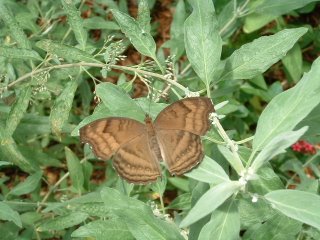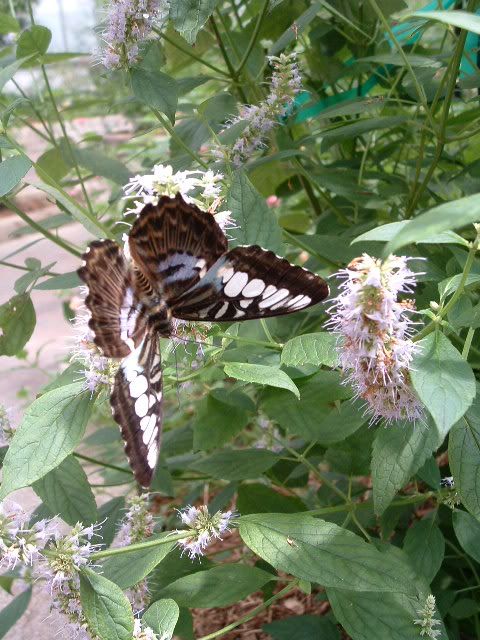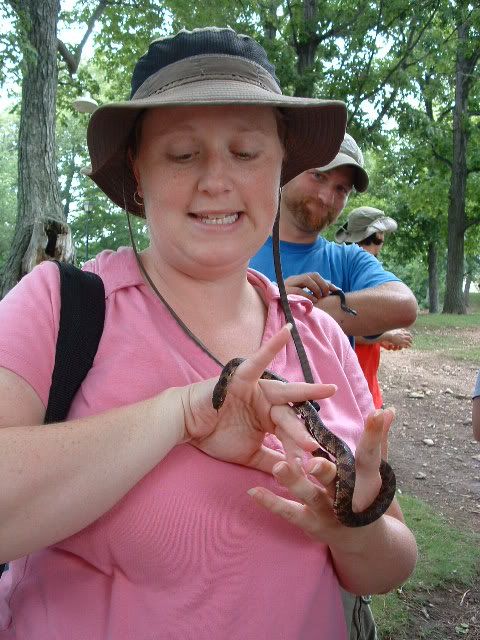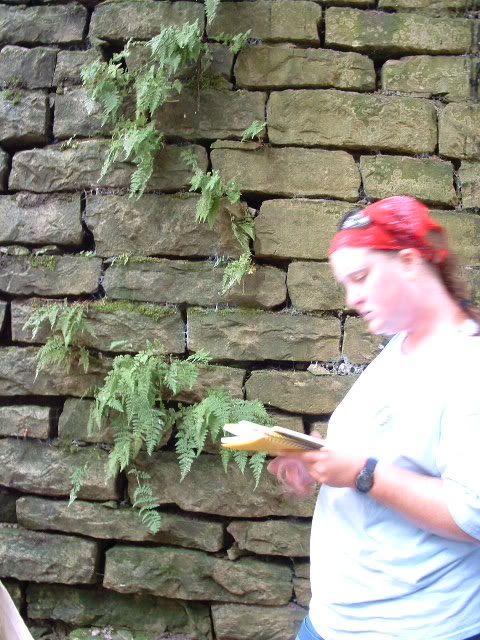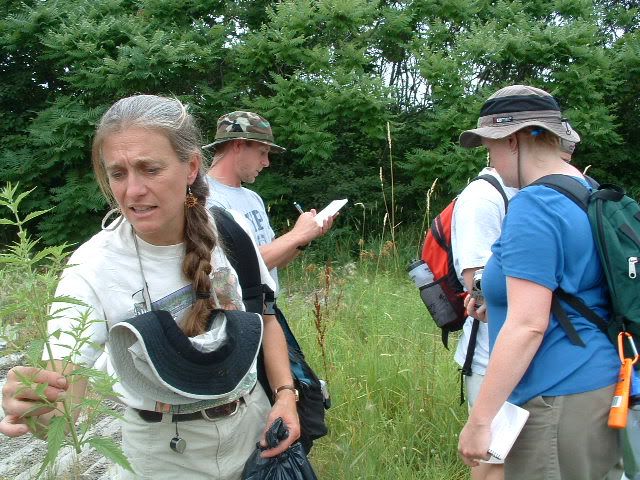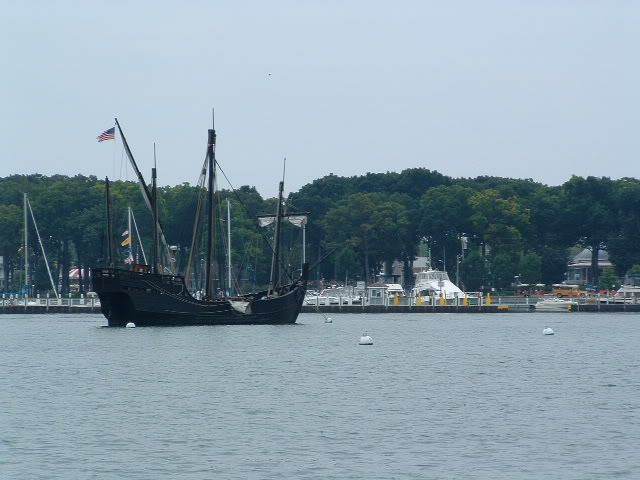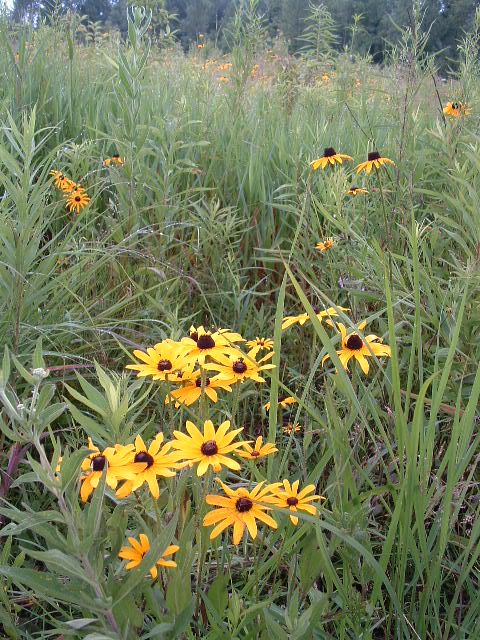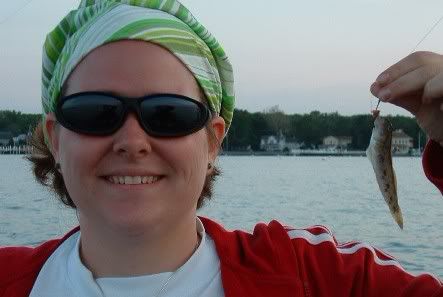Once upon a winery
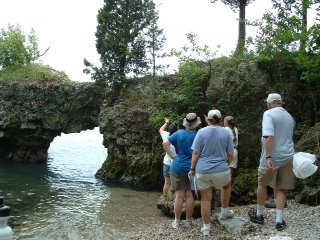
Day 2, 7/11/06
So, why do we have the plants we have? Why do they grow where they grow? That's what Tuesday was all about. Succession was our topic today in class and what plants come along with that succession. We have an interesting perspective on things here around Lake Erie because the bedrock (limestone and dolomite) is so close to the surface. There are some areas, including some that we were visiting this week, that are almost desert like and in other areas you have lush forests.
We talked about early successional plants and what adaptations they had that allowed them to do that. This can range from plants as simple as lichens and mosses and from there is slowly move on to shrubs and small trees like rough-leafed dogwood and up to larger trees like Pin Oaks and on. It all depends on where you are. Around here, you're talking about a wetter environment with moderated temperatures due to the lake effect.
Our field trip for the day to demonstrate this was going to Middle Bass Island. This is the home of the old Lonz Winery. It has since been turned over to the state parks and they're pretty much letting it go wild. It's a botanist's dream. They're in talks apparently about what they're going to do with the building. Everything from museum to resort has been mentioned I guess. We'll just have to wait and see what happens eh?
Our first stop was almost right off the docks and we checked out various grasses (like Timothy Grass and Reed Canary Grass) and trees (like Hackberry and Black Willow). I managed to get a nice specimen for pressing from the willow with some flower heads and seed tufts on it.
As we went along, fighting off large mosquitoes, we collected berry spikes from some Staghorn Sumac (for later use) and munched on ripe mulberries (the blacker they are, the sweeter they taste). We checked out the old grape vines that had been allowed to go wild since the 1960's and came across some Trumpet Vine hiding under the trees. Of course it was completely surrounded by Poison Ivy but we came out unscathed.
Middle Bass Island is where I got to see my first glacial grooves. When we got to the spot, my attention was immediately distraced by us finding some great rushes and sedges but then I noticed the rock it was growing on. I had always seen photos of the grooves at Kellys Island (you'll see a pic or two that I took later) and was expecting to see fencing around anything like this. Not so here. You could walk on it, touch it, even roll around on it if you wanted. One thing we noticed, thanks to the handy dandy compass that I have attached to my fishing hat, is that the grooves are running almost directly east and west. One would think they would run relatively north and south. Facinating but I have no clue why the glaciers would suddenly decide to go east or west. That, however, is a question for the Geology of Lake Erie class. We were all about the Swamp Milkweed and the Umbrella Sedge (yet another pressing specimin). Did you know that milkweeds have a neat little thing called nectar cups that help distinguish them?
I'll fast forward a bit (past the bird sized mosquitos, the rain, and the tree hugging incident - hey, it was a beautiful tree!) to two of the cool places we went to. The shoreline and Kuehnle Wildlife Area were very very cool. We even got to see an Eagle nest at Kuehnle! I couldn't get a good picutre myself though.
At Haunk's Pond, we drifted around the side of the road looking at all sorts of plants like the Elderberry, the Water Horehound, Lady's Thumb, and Rice Cutgrass (not a fun grass to walk through in shorts).
The other spot we visited was the shoreline. We navigated though the trees and mosquitoes and black flies till we found our destination. It was well worth it. I can't tell you how amazing it is to be in a place that is such a harsh envorionment with the wind and water and extremes in temperature (the quarry at Kellys is another example, but that comes later) and yet it still has a mass amount of life! We saw Winged Loosestrife (which is native, unlike Purple Loostrife) and Hairbells (which are endangered) and Marsh Roses amongst others.
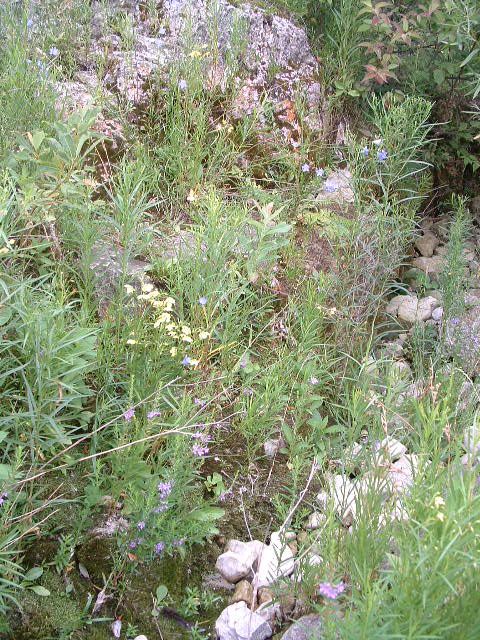
The trip overall was awsome! If you ever get to visit Middle Bass State Park, bring some bug spray, but hike around and see the wonderful things they have there.
